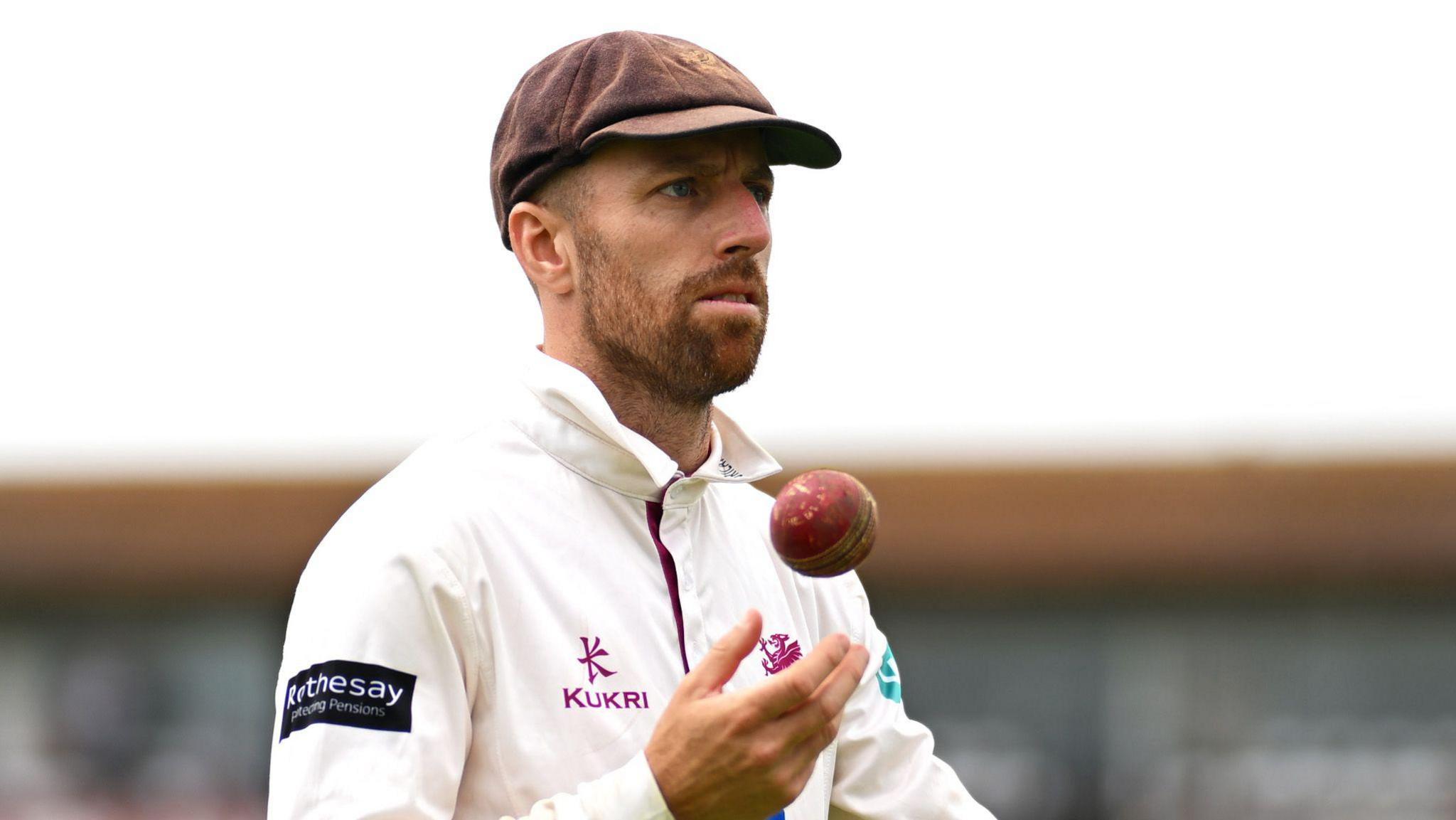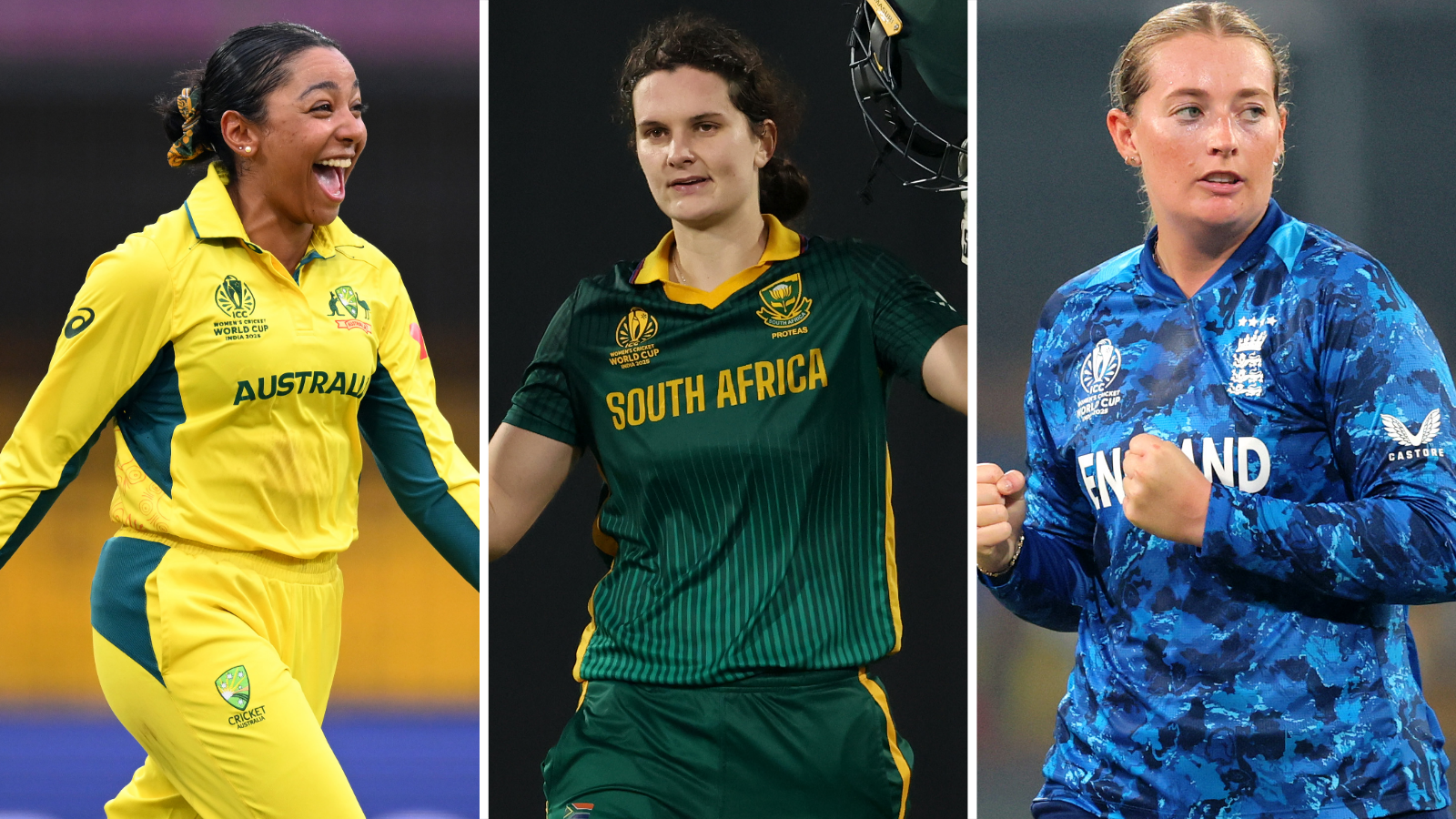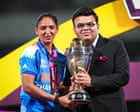To play this video you need to enable JavaScript in your browser.
This video can not be played
-
1 hour ago
The morning after the night before.
Normal service has resumed for Navi Mumbai, the scene of India’s famous and long-awaited Women’s World Cup win.
The horns are blaring, the coffee shops bustling, the temperatures soaring.
But for those fortunate enough to witness Harmanpreet Kaur lifting the trophy in front of the tens of thousands of adoring fans who turned the DY Patil Stadium into a colosseum of blue, it is no normal day.
A downpour had threatened to spoil the World Cup party in the afternoon, delaying the start of India’s showdown with South Africa, but there was no raining on their parade once Deepti Sharma claimed the winning wicket to seal a first World Cup success after three final defeats across both formats.
Despite finishing past midnight local time, the ground was still heaving until the last India superstar had left the field after a trophy parade, the chaos in the streets surrounding the stadium required police assistance and barricades to help filter everyone out safely amid a cacophony of joy.
While it was a fairytale ending, and one which could ignite a dramatic shift in women’s cricket, the tournament itself was far from smooth sailing.
There are lessons to be learned from its organisation and the choice of venues.
Importantly, the lives of women and girls in India will not change overnight as a result of one cricket match. They face barriers every day in terms of accessing education, opportunities and access to sport, and it would be far too idealistic to think that shifting the attitudes and mindsets of those standing in their way would happen with this quick fix.
Shafali Verma, India’s somewhat unlikely all-round hero in the final, is one of the youngest members of the team at 21 years old but even she had to pretend to be a boy as a child so that her father could enrol her in a cricket academy.
But, it has given hope. It has created a feeling that – though it may not happen straight away – more success is inevitable, and with that comes more investment and more women, girls and their families will see what can be achieved if they are given the stage to thrive.
The Women’s Premier League – the T20 franchise league that was set up in 2023 – has helped accelerate growth and the demand and attention on the tournament should only grow now.
The journey to glory was not perfect, but it showed what could be possible.
A low-key start, predictability, and rain
In the initial stages, upon first arriving in India, you would be forgiven for being completely unaware that a World Cup was taking place.
There was the occasional billboard outside airports, and those increased in number once you got nearer to the grounds, but otherwise it was very low-key.
Airport staff were surprised to see “Cricket World Cup” as the reason for travel on our visas, which we had to explain was the women’s. There were smiles of interest, but little more.
The opening match against Sri Lanka in Guwahati was electric, but England’s opening game against South Africa two days later barely filled one stand – and that became the trend. Also in Indore, Visakhapatnam and Navi Mumbai, there were sell-outs when India played but poor attendances for everybody else, though Australia and England did attract a few more than average.
“At the start of the tournament, we did some work looking at whether people in Mumbai knew when India were playing their first game,” said BBC Test Match Special’s Prakash Wakankar.
“I remember conversations in the pub that we sat in, with two giant screens on a Sunday. India were playing Pakistan but a lot of people were just enjoying their food and drink with friends, saying I’m not really following it.
“There’s a lot to learn. It’s true that taking games to smaller cities is important but it doesn’t allow for a country the size of India to be able to publicise as much as they would like to, but I do believe that now, women’s cricket in India is not just here to stay but is an equal partner in sharing the passion of cricket that Indians have.”
India were co-hosts with Sri Lanka because of political tensions with Pakistan, who were based in Colombo, but the scheduling of the tournament coincided with the country’s monsoon season.
Five out of 11 games were washed out, which hindered Pakistan, Sri Lanka and New Zealand’s tournament significantly. Those games were scheduled at 15:00 local time, and of course rain cannot be helped, but the weather patterns were very predictable with a trend of sunny mornings followed by downpours and storms in the late afternoon.
BBC Sport asked the International Cricket Council (ICC) why games could not have started earlier but did not receive a response.
There are question marks over the choice of India’s venues too, which were difficult to access and struggled to draw blockbuster crowds. However, given the eventual victory, is seems unlikely that this will be repeated – the DY Patil Stadium has a capacity of just over 45,000 and still, many fans were left disappointed without tickets.
The passion is there, the match has been lit. India cannot afford to let it dim.
The semi-final that changed it all
To play this video you need to enable JavaScript in your browser.
This video can not be played
Another impact of the Colombo rain and the quiet group stage was that the tournament lacked any jeopardy, there were no shocks or surprises which make World Cups in any sport so special.
The biggest would have been Pakistan beating England, as they very likely would have done, had the weather not intervened.
Those games may not have changed the eventual semi-finalists, as the final four were the ones most would have predicted anyway, but it meant that it was taken out of their hands, and it took until the knockouts for the tournament to really kickstart.
First, Laura Wolvaardt stunned England with a majestic 169 and Marizanne Kapp ripped through the batters with 5-20 as South Africa dominated in Guwahati, rewriting their script after they were bowled out for 69 there in their opener.
Wolvaardt’s was the first of four centuries (two to her, one for Phoebe Litchfield and Jemimah Rodrigues) in the semis which all oozed class, power and skill to show just how much the game has developed, and what these players can do on the biggest stage.
Rodrigues then lit up Navi Mumbai as India toppled defending champions Australia in an all-time classic, chasing a record 339 under the bright lights which reignited the hopes of a nation after they had consigned themselves to disappointment following three group-stage defeats.
That is what turned the tide. Queues formed outside the stadium more than 24 hours out from the first ball of the final, stalls and vendors lined the streets selling hats, flags and shirts with Smriti Mandhana and Harmanpreet’s names on the back.
As the stars aligned, the stars showed up – Sachin Tendulkar, the leading run-scorer in Test cricket history, delivered a pre-match talk for the team before the game and sent the crowd ecstatic when he walked with the trophy on to the outfield.
“This is India. It takes very little to get emotions up in a good way or a bad way and that’s exactly what’s happened,” Wakankar added.
“I’ve had people, friends who are influential enough to be able to get tickets on their own, calling me all over the past day and a half and tickets are just not there.
“I’ve heard that players’ families, extended families, having been struggling to get into the ground.”
For the post-match celebrations, India’s players changed into different playing shirts with the word “Champions” emblazoned on the front. Past players, legends in Jhulan Goswami and Mithali Raj, joined the party and there is talk of a winners’ parade in Mumbai with the trophy, a chance for even more people to see their new heroes.
In the end, it was Harmanpreet, after years of near-misses in a stellar career, who delivered the most fitting summary.
“This is not the end, this is just the beginning.”














